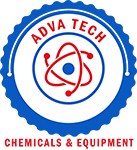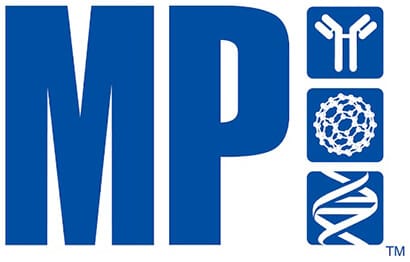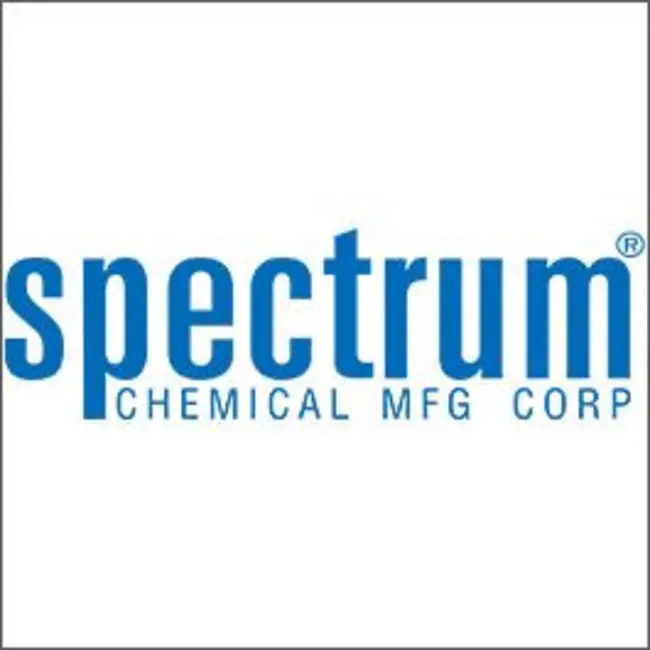GenScript Nanjing Inc.
Showing 1101–1150 of 2554 results
-
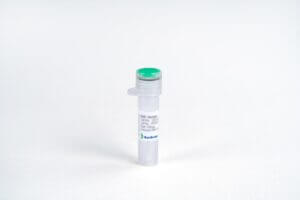
H1N1 (A/California/04/2009), Hemagglutinin
$43.13 Add to cart View Product DetailsInfluenza hemagglutinin (HA) is a glycoprotein found on the surface of the influenzavirus. It is responsible for binding the virus to cells with sialic acid on their membranes, such as cells in the upper respiratory tract or erythrocytes. It is also responsible for the fusion of the viral envelope with the endosome membrane after the pH has been reduced. The name “hemagglutinin” comes from the protein’s ability to cause red blood cells (erythrocytes) to clump together in vitro. HA has two functions. First, it allows the recognition of target vertebrate cells, accomplished through binding to these cells’ sialic acid-containing receptors. Second, once bound it facilitates the entry of the viral genome into the target cells by causing the fusion of the host endosomal membrane with the viral membrane. H1N1 is a subtype of influenza virus A and the most common cause of influenza in humans.
-

H1N1 (A/California/04/2009), Hemagglutinin
$194.06 Add to cart View Product DetailsInfluenza hemagglutinin (HA) is a glycoprotein found on the surface of the influenzavirus. It is responsible for binding the virus to cells with sialic acid on their membranes, such as cells in the upper respiratory tract or erythrocytes. It is also responsible for the fusion of the viral envelope with the endosome membrane after the pH has been reduced. The name “hemagglutinin” comes from the protein’s ability to cause red blood cells (erythrocytes) to clump together in vitro. HA has two functions. First, it allows the recognition of target vertebrate cells, accomplished through binding to these cells’ sialic acid-containing receptors. Second, once bound it facilitates the entry of the viral genome into the target cells by causing the fusion of the host endosomal membrane with the viral membrane. H1N1 is a subtype of influenza virus A and the most common cause of influenza in humans.
-
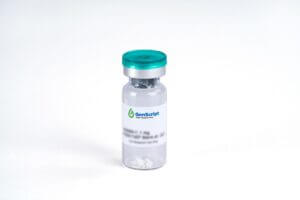
HB-EGF, Human
$737.44 Add to cart View Product DetailsProheparin-binding EGF-like growth factor (HB-EGF), also known as DTR, DTS and HEGFL, is a member of the EGF family of mitogens. It is expressed in macrophages, monocytes, endothelial cells and muscle cells. HB-EGF signals through the EGF receptor to stimulate the proliferation of smooth muscle cells, epithelial cells and keratinocytes. Compared to EGF, HB-EGF binds to the EGF receptor with a higher affinity and has been shown to bemore mitogenic, likely due to its ability to bind to heparin and heparin sulfate proteoglycans. HB-EGF has also been reported to act as a diphtheria toxin receptor, mediating endocytosis of the bound toxin. Heparin-binding EGF-like growth factor has been shown to interact with NRD1, Zinc finger and BTB domain-containing protein 16 and BAG1.
-

HB-EGF, Human
$43.13 Add to cart View Product DetailsProheparin-binding EGF-like growth factor (HB-EGF), also known as DTR, DTS and HEGFL, is a member of the EGF family of mitogens. It is expressed in macrophages, monocytes, endothelial cells and muscle cells. HB-EGF signals through the EGF receptor to stimulate the proliferation of smooth muscle cells, epithelial cells and keratinocytes. Compared to EGF, HB-EGF binds to the EGF receptor with a higher affinity and has been shown to bemore mitogenic, likely due to its ability to bind to heparin and heparin sulfate proteoglycans. HB-EGF has also been reported to act as a diphtheria toxin receptor, mediating endocytosis of the bound toxin. Heparin-binding EGF-like growth factor has been shown to interact with NRD1, Zinc finger and BTB domain-containing protein 16 and BAG1.
-

HB-EGF, Human
$90.56 Add to cart View Product DetailsProheparin-binding EGF-like growth factor (HB-EGF), also known as DTR, DTS and HEGFL, is a member of the EGF family of mitogens. It is expressed in macrophages, monocytes, endothelial cells and muscle cells. HB-EGF signals through the EGF receptor to stimulate the proliferation of smooth muscle cells, epithelial cells and keratinocytes. Compared to EGF, HB-EGF binds to the EGF receptor with a higher affinity and has been shown to bemore mitogenic, likely due to its ability to bind to heparin and heparin sulfate proteoglycans. HB-EGF has also been reported to act as a diphtheria toxin receptor, mediating endocytosis of the bound toxin. Heparin-binding EGF-like growth factor has been shown to interact with NRD1, Zinc finger and BTB domain-containing protein 16 and BAG1.
-

HB-EGF, Human
$1,030.69 Add to cart View Product DetailsProheparin-binding EGF-like growth factor (HB-EGF), also known as DTR, DTS and HEGFL, is a member of the EGF family of mitogens. It is expressed in macrophages, monocytes, endothelial cells and muscle cells. HB-EGF signals through the EGF receptor to stimulate the proliferation of smooth muscle cells, epithelial cells and keratinocytes. Compared to EGF, HB-EGF binds to the EGF receptor with a higher affinity and has been shown to bemore mitogenic, likely due to its ability to bind to heparin and heparin sulfate proteoglycans. HB-EGF has also been reported to act as a diphtheria toxin receptor, mediating endocytosis of the bound toxin. Heparin-binding EGF-like growth factor has been shown to interact with NRD1, Zinc finger and BTB domain-containing protein 16 and BAG1.
-

HB-EGF, Human
$68.14 Add to cart View Product DetailsProheparin-binding EGF-like growth factor (HB-EGF), also known as DTR, DTS and HEGFL, is a member of the EGF family of mitogens. It is expressed in macrophages, monocytes, endothelial cells and muscle cells. HB-EGF signals through the EGF receptor to stimulate the proliferation of smooth muscle cells, epithelial cells and keratinocytes. Compared to EGF, HB-EGF binds to the EGF receptor with a higher affinity and has been shown to bemore mitogenic, likely due to its ability to bind to heparin and heparin sulfate proteoglycans. HB-EGF has also been reported to act as a diphtheria toxin receptor, mediating endocytosis of the bound toxin. Heparin-binding EGF-like growth factor has been shown to interact with NRD1, Zinc finger and BTB domain-containing protein 16 and BAG1.
-

HB-EGF, Human
$155.25 Add to cart View Product DetailsProheparin-binding EGF-like growth factor (HB-EGF), also known as DTR, DTS and HEGFL, is a member of the EGF family of mitogens. It is expressed in macrophages, monocytes, endothelial cells and muscle cells. HB-EGF signals through the EGF receptor to stimulate the proliferation of smooth muscle cells, epithelial cells and keratinocytes. Compared to EGF, HB-EGF binds to the EGF receptor with a higher affinity and has been shown to bemore mitogenic, likely due to its ability to bind to heparin and heparin sulfate proteoglycans. HB-EGF has also been reported to act as a diphtheria toxin receptor, mediating endocytosis of the bound toxin. Heparin-binding EGF-like growth factor has been shown to interact with NRD1, Zinc finger and BTB domain-containing protein 16 and BAG1.
-

HB-EGF, Human
$737.44 Add to cart View Product DetailsProheparin-binding EGF-like growth factor (HB-EGF), also known as DTR, DTS and HEGFL, is a member of the EGF family of mitogens. It is expressed in macrophages, monocytes, endothelial cells and muscle cells. HB-EGF signals through the EGF receptor to stimulate the proliferation of smooth muscle cells, epithelial cells and keratinocytes. Compared to EGF, HB-EGF binds to the EGF receptor with a higher affinity and has been shown to bemore mitogenic, likely due to its ability to bind to heparin and heparin sulfate proteoglycans. HB-EGF has also been reported to act as a diphtheria toxin receptor, mediating endocytosis of the bound toxin. Heparin-binding EGF-like growth factor has been shown to interact with NRD1, Zinc finger and BTB domain-containing protein 16 and BAG1.
-

HB-EGF, Human
$76.76 Add to cart View Product DetailsProheparin-binding EGF-like growth factor (HB-EGF), also known as DTR, DTS and HEGFL, is a member of the EGF family of mitogens. It is expressed in macrophages, monocytes, endothelial cells and muscle cells. HB-EGF signals through the EGF receptor to stimulate the proliferation of smooth muscle cells, epithelial cells and keratinocytes. Compared to EGF, HB-EGF binds to the EGF receptor with a higher affinity and has been shown to bemore mitogenic, likely due to its ability to bind to heparin and heparin sulfate proteoglycans. HB-EGF has also been reported to act as a diphtheria toxin receptor, mediating endocytosis of the bound toxin. Heparin-binding EGF-like growth factor has been shown to interact with NRD1, Zinc finger and BTB domain-containing protein 16 and BAG1.
-

HB-EGF, Human
$29.33 Add to cart View Product DetailsProheparin-binding EGF-like growth factor (HB-EGF), also known as DTR, DTS and HEGFL, is a member of the EGF family of mitogens. It is expressed in macrophages, monocytes, endothelial cells and muscle cells. HB-EGF signals through the EGF receptor to stimulate the proliferation of smooth muscle cells, epithelial cells and keratinocytes. Compared to EGF, HB-EGF binds to the EGF receptor with a higher affinity and has been shown to bemore mitogenic, likely due to its ability to bind to heparin and heparin sulfate proteoglycans. HB-EGF has also been reported to act as a diphtheria toxin receptor, mediating endocytosis of the bound toxin. Heparin-binding EGF-like growth factor has been shown to interact with NRD1, Zinc finger and BTB domain-containing protein 16 and BAG1.
-

HB-EGF, Mouse
$1,035.00 Add to cart View Product DetailsHeparin-binding EGF-like growth factor (HB-EGF) is a member of the EGF family of proteins. HB-EGF-like growth factor is synthesized as a membrane-anchored mitogenic and chemotactic glycoprotein. An epidermal growth factor produced by monocytes and macrophages, due to an affinity for heparin is termed HB-EGF. It has been shown to play a role in wound healing, cardiac hypertrophy and heart development and function. The transmembrane form of HB-EGF is the unique receptor for diptheria toxin and functions in juxtacrine signaling in cells. Both forms of HB-EGF participate in normal physiological processes and in pathological processes including tumor progression and metastasis, organ hyperplasia, and atherosclerotic disease. HB-EGF can bind two locations on cell surfaces, heparan sulfate proteoglycans and EGF-receptor effecting cell to cell interactions.
-

HB-EGF, Mouse
$68.14 Add to cart View Product DetailsHeparin-binding EGF-like growth factor (HB-EGF) is a member of the EGF family of proteins. HB-EGF-like growth factor is synthesized as a membrane-anchored mitogenic and chemotactic glycoprotein. An epidermal growth factor produced by monocytes and macrophages, due to an affinity for heparin is termed HB-EGF. It has been shown to play a role in wound healing, cardiac hypertrophy and heart development and function. The transmembrane form of HB-EGF is the unique receptor for diptheria toxin and functions in juxtacrine signaling in cells. Both forms of HB-EGF participate in normal physiological processes and in pathological processes including tumor progression and metastasis, organ hyperplasia, and atherosclerotic disease. HB-EGF can bind two locations on cell surfaces, heparan sulfate proteoglycans and EGF-receptor effecting cell to cell interactions.
-

HB-EGF, Mouse
$155.25 Add to cart View Product DetailsHeparin-binding EGF-like growth factor (HB-EGF) is a member of the EGF family of proteins. HB-EGF-like growth factor is synthesized as a membrane-anchored mitogenic and chemotactic glycoprotein. An epidermal growth factor produced by monocytes and macrophages, due to an affinity for heparin is termed HB-EGF. It has been shown to play a role in wound healing, cardiac hypertrophy and heart development and function. The transmembrane form of HB-EGF is the unique receptor for diptheria toxin and functions in juxtacrine signaling in cells. Both forms of HB-EGF participate in normal physiological processes and in pathological processes including tumor progression and metastasis, organ hyperplasia, and atherosclerotic disease. HB-EGF can bind two locations on cell surfaces, heparan sulfate proteoglycans and EGF-receptor effecting cell to cell interactions.
-
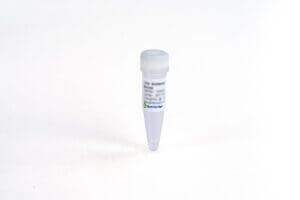
HbA1c (4G1), mAb, Mouse
$78.49 Add to cart View Product DetailsGlycated hemoglobin (HbA1c) is formed by hemoglobin’s exposure to plasma glucose in a non-enzymatic process. As the average amount of plasma glucose increases, the fraction of HbA1c scales up. HbA1c reflects average plasma glucose over the previous eight to twelve weeks and it can be used as a marker to measure long-term blood glucose levels. HbA1c test is routinely performed in people with type 1 and type 2 diabetes to evaluate how well diabetes is controlled. The normal range for HbA1c level is less than 6%.
-

HbA1c (4G1), mAb, Mouse
$784.88 Add to cart View Product DetailsGlycated hemoglobin (HbA1c) is formed by hemoglobin’s exposure to plasma glucose in a non-enzymatic process. As the average amount of plasma glucose increases, the fraction of HbA1c scales up. HbA1c reflects average plasma glucose over the previous eight to twelve weeks and it can be used as a marker to measure long-term blood glucose levels. HbA1c test is routinely performed in people with type 1 and type 2 diabetes to evaluate how well diabetes is controlled. The normal range for HbA1c level is less than 6%.
-

HbA1c (4G1), mAb, Mouse
$6,641.25 Add to cart View Product DetailsGlycated hemoglobin (HbA1c) is formed by hemoglobin’s exposure to plasma glucose in a non-enzymatic process. As the average amount of plasma glucose increases, the fraction of HbA1c scales up. HbA1c reflects average plasma glucose over the previous eight to twelve weeks and it can be used as a marker to measure long-term blood glucose levels. HbA1c test is routinely performed in people with type 1 and type 2 diabetes to evaluate how well diabetes is controlled. The normal range for HbA1c level is less than 6%.
-

HCG (46H8), mAb, Mouse
$215.63 Add to cart View Product DetailsHuman chorionic gonadotropin (HCG) is a polypeptide hormone produced by the human placenta. HCG is a heterodimer, composed of an alpha and a beta subunit. The level of HCG is elevated in the serum of pregnant women. It is a useful marker for diagnosis of pregnancy.
-

HCG (46H8), mAb, Mouse
$2,070.00 Add to cart View Product DetailsHuman chorionic gonadotropin (HCG) is a polypeptide hormone produced by the human placenta. HCG is a heterodimer, composed of an alpha and a beta subunit. The level of HCG is elevated in the serum of pregnant women. It is a useful marker for diagnosis of pregnancy.
-
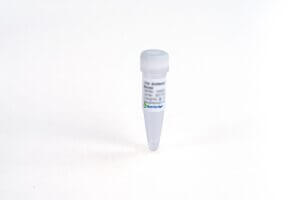
HCG (46H8), mAb, Mouse
$15,525.00 Add to cart View Product DetailsHuman chorionic gonadotropin (HCG) is a polypeptide hormone produced by the human placenta. HCG is a heterodimer, composed of an alpha and a beta subunit. The level of HCG is elevated in the serum of pregnant women. It is a useful marker for diagnosis of pregnancy.
-

HCG (5A8), mAb, Mouse
$73.87 Add to cart View Product DetailsHuman chorionic gonadotropin (HCG) is a polypeptide hormone produced by the human placenta. HCG is a heterodimer, composed of an alpha and a beta subunit. The level of HCG is elevated in the serum of pregnant women. It is a useful marker for diagnosis of pregnancy.
-

HCG (5A8), mAb, Mouse
$638.25 Add to cart View Product DetailsHuman chorionic gonadotropin (HCG) is a polypeptide hormone produced by the human placenta. HCG is a heterodimer, composed of an alpha and a beta subunit. The level of HCG is elevated in the serum of pregnant women. It is a useful marker for diagnosis of pregnancy.
-
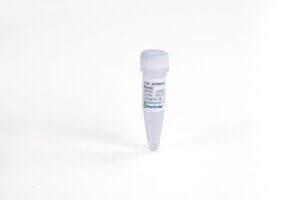
HCG (5A8), mAb, Mouse
$5,433.75 Add to cart View Product DetailsHuman chorionic gonadotropin (HCG) is a polypeptide hormone produced by the human placenta. HCG is a heterodimer, composed of an alpha and a beta subunit. The level of HCG is elevated in the serum of pregnant women. It is a useful marker for diagnosis of pregnancy.
-
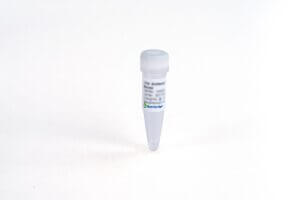
HCG (5B8), mAb, Mouse
$72.42 Add to cart View Product DetailsHuman chorionic gonadotropin (HCG) is a polypeptide hormone produced by the human placenta. HCG is a heterodimer, composed of an alpha and a beta subunit. The level of HCG is elevated in the serum of pregnant women. It is a useful marker for diagnosis of pregnancy.
-

HCG (5B8), mAb, Mouse
$638.25 Add to cart View Product DetailsHuman chorionic gonadotropin (HCG) is a polypeptide hormone produced by the human placenta. HCG is a heterodimer, composed of an alpha and a beta subunit. The level of HCG is elevated in the serum of pregnant women. It is a useful marker for diagnosis of pregnancy.
-

HCG (5B8), mAb, Mouse
$5,433.75 Add to cart View Product DetailsHuman chorionic gonadotropin (HCG) is a polypeptide hormone produced by the human placenta. HCG is a heterodimer, composed of an alpha and a beta subunit. The level of HCG is elevated in the serum of pregnant women. It is a useful marker for diagnosis of pregnancy.
-

HCV Antibody (29D), mAb, Mouse
$398.48 Add to cart View Product DetailsHepatitis
C virus (HCV) is a one kind of single-stranded RNA virus. It can causes liver
damage. The HCV capsid is formed by polymerization of the HCV Core Antigen (HCV
Ag). It was reported that HCV Ag could be used to diagnose active HCV infection. -

HCV Antibody (29D), mAb, Mouse
$3,980.44 Add to cart View Product DetailsHepatitis
C virus (HCV) is a one kind of single-stranded RNA virus. It can causes liver
damage. The HCV capsid is formed by polymerization of the HCV Core Antigen (HCV
Ag). It was reported that HCV Ag could be used to diagnose active HCV infection. -
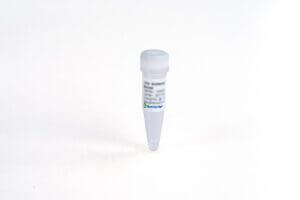
HCV Antibody (29D), mAb, Mouse
$33,836.74 Add to cart View Product DetailsHepatitis
C virus (HCV) is a one kind of single-stranded RNA virus. It can causes liver
damage. The HCV capsid is formed by polymerization of the HCV Core Antigen (HCV
Ag). It was reported that HCV Ag could be used to diagnose active HCV infection. -

HCV Antibody (45F4), human chimeric Antibody
$398.48 Add to cart View Product DetailsHepatitis
C virus (HCV) is a one kind of single-stranded RNA virus. It can causes liver
damage. The HCV capsid is formed by polymerization of the HCV Core Antigen (HCV
Ag). It was reported that HCV Ag could be used to diagnose active HCV infection. -

HCV Antibody (45F4), human chimeric Antibody
$3,980.44 Add to cart View Product DetailsHepatitis
C virus (HCV) is a one kind of single-stranded RNA virus. It can causes liver
damage. The HCV capsid is formed by polymerization of the HCV Core Antigen (HCV
Ag). It was reported that HCV Ag could be used to diagnose active HCV infection. -
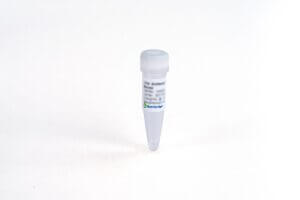
HCV Antibody (45F4), human chimeric Antibody
$33,836.74 Add to cart View Product DetailsHepatitis
C virus (HCV) is a one kind of single-stranded RNA virus. It can causes liver
damage. The HCV capsid is formed by polymerization of the HCV Core Antigen (HCV
Ag). It was reported that HCV Ag could be used to diagnose active HCV infection. -

Heat Stable FGF-basic, Human
$2,173.50 Add to cart View Product DetailsHeat Stable FGF-basic, Human is a pleiotropic cytokine and one of the prototypic members of the heparin-binding FGF family. Like other FGF family members, FGF-basic has the β trefoil structure. In vivo, FGF-basic is produced by a variety of cells, including cardiomyocytes, fibroblasts, and vascular cells. FGF-basic regulates a variety of processes including cell proliferation, differentiation, survival, adhesion, motility, apoptosis, limb formation and wound healing. FGF-basic can be tumorigenic due to its role in angiogenesis and blood vessel remodeling. The angiogenic effects of FGF-basic can produce beneficial cardioprotection during acute heart injury.
-

Heat Stable FGF-basic, Human
$86.25 Add to cart View Product DetailsHeat Stable FGF-basic, Human is a pleiotropic cytokine and one of the prototypic members of the heparin-binding FGF family. Like other FGF family members, FGF-basic has the β trefoil structure. In vivo, FGF-basic is produced by a variety of cells, including cardiomyocytes, fibroblasts, and vascular cells. FGF-basic regulates a variety of processes including cell proliferation, differentiation, survival, adhesion, motility, apoptosis, limb formation and wound healing. FGF-basic can be tumorigenic due to its role in angiogenesis and blood vessel remodeling. The angiogenic effects of FGF-basic can produce beneficial cardioprotection during acute heart injury.
-

Heat Stable FGF-basic, Human
$314.81 Add to cart View Product DetailsHeat Stable FGF-basic, Human is a pleiotropic cytokine and one of the prototypic members of the heparin-binding FGF family. Like other FGF family members, FGF-basic has the β trefoil structure. In vivo, FGF-basic is produced by a variety of cells, including cardiomyocytes, fibroblasts, and vascular cells. FGF-basic regulates a variety of processes including cell proliferation, differentiation, survival, adhesion, motility, apoptosis, limb formation and wound healing. FGF-basic can be tumorigenic due to its role in angiogenesis and blood vessel remodeling. The angiogenic effects of FGF-basic can produce beneficial cardioprotection during acute heart injury.
-
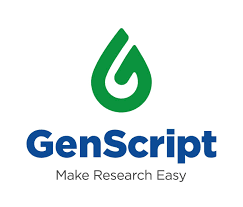
HEK293/5-HT2C Stable Cell Line
$7,331.25 Add to cart View Product Details5-Hydroxytryptamine (5-HT, also commonly known as serotonin) is synthesized in enterochromaffin cells in the intestine and in serotonergic nerve terminals. In the periphery, 5-HT mediates gastrointestinal motility, platelet aggregation, and contraction of blood vessels. Many functions of the central nervous system are influenced by 5-HT, including sleep, motor activity, sensory perception, arousal, and appetite. A family of 12 GPCRs and one ion channel mediate the biological effects of 5-HT (Hoyer et al., 1994). 5HT2C is expressed in the brain and spinal cord, especially the choroid plexus. 5HT2C receptor agonists may have important clinical value in the treatment of mental and eating disorders, such as depression, panic anxiety, OCD, bulimia, and obesity. GenScript’s cloned human 5-HT2C expressing cell line is generated in the CHO-K1 host.
-

HEK293/ACE2 Stable Cell Line
$6,468.75 Add to cart View Product DetailsRecombinant HEK293 cells stably express Angiotensin-converting enzyme 2 (ACE2) on the cell surface. The surface expression of ACE2 is validated by FACS analysis. This stable cell line product is designed for cell-based binding assays that measure the binding affinity and stability of antibody based biologics binding with ACE2, and can be utilized for SARS-Cov-2 pseudovirus neutralization assay for screening neutralizing antibodies.
-

HEK293/AT1 Stable Cell Line
$7,331.25 Add to cart View Product DetailsAngiotensin receptor 1 (AT1 receptor) is a member of angiotensin receptors which are responsible for the signal transduction of the main effecter hormone. Effects mediated by the AT1 receptor include vasoconstriction, aldosterone synthesis and secretion, increased vasopressin secretion, cardiac hypertrophy, augmentation of peripheral noradrenergic activity, vascular smooth muscle cells proliferation, decreased renal blood flow, renal renin inhibition, renal tubular sodium reuptake, modulation of central sympathetic nervous system activity, cardiac contractility, central osmocontrol and extracellular matrix formation.
-

HEK293/CLDN18.2 Stable Cell Line
$7,331.25 Add to cart View Product DetailsClaudins are a family of proteins, which play a role in maintaining tight cell junctions. Differentclaudin subtypes are expressed on different tissues.Claudin18 isoform 2 (CLDN18.2) expressionin normal tissues is restricted to cells of the gastric mucosa and is absent from other healthytissues However, CLDN 18.2 is expressed in 70% of primary gastric adenocarcinomas and itsmetastases (101). It has also beenshown to be expressed in a number of other cancers,including pancreatic (50%), esophagus (30%) and NSCLC (25%)The restricted expressionmakes it a potential drug target for the treatment of gastric and pancreatic adenocarcinoma, asevidenced by effortsto target CLDN18.2 via naked antibody and CAR-T modalities.
* The mycoplasma test was
performed with MycoAlert™ PLUS Mycoplasma Detection Kit of Lonza. -

HEK293/EP1 Stable Cell Line
$7,331.25 Add to cart View Product DetailsProstaglandins are known to affect the nervous system and can modulate synaptic transmission and neurotransmitter release, the sleep/wake cycle, fever, pain, and the immune system. Prostaglandin E2 receptor, EP1 subtype (EP1/PTGER1) is a receptor for prostaglandin E2 (PGE2). The members of the EP receptor family, EP1, EP2, EP3, and EP4, elicit their actions by altering cyclic adenosine monophosphate (cAMP) or intracellular calcium concentrations. EP1 activates phospholipase C and phosphatidylinositol turnover and stimulates the release of intracellular calcium via a Gi/Gq-coupled mechanism. EP2 and EP4 both signal through a Gs-coupled mechanism that stimulates adenylyl cyclase and increases intracellular levels of cAMP. EP1 appears to mediate the effects of PGE2 in promoting the formation of precancerous lesions in animal models of colon cancer. In addition, EP1 has an inhibitory effect on stress-induced aggressive and risk-taking behaviors in mice.
-

HEK293/FP/Gα15 Stable Cell Line
$7,331.25 Add to cart View Product DetailsProstaglandin F (2-alpha) is known as a potent luteolytic agent. It is involved in modulating intraocular pressure and smooth muscle contraction in uterus. Its effects on cells are mediated through specific interaction with the Prostanoid receptor FP, which is a 359-amino acid protein. Having 7 putative transmembrane domains, FP resembles the characteristic of G protein coupled receptors. Knockout studies in mice suggest that the interaction of PGF2-alpha with this receptor may initiate parturition in ovarian luteal cells and thereupon induce luteolysis.
-

HEK293/GCGR/Gα15 Stable Cell Line
$7,331.25 Add to cart View Product DetailsGlucagon regulates blood glucose via control of hepatic glycogenolysis and gluconeogenesis and via regulation of insulin release from the β cell. Pharmacological administration of glucagon increases blood glucose in normal and diabetic subjects, and produces positive inotropic and chronotropic cardiovascular effects, relaxation of smooth muscle in the gastrointestinal tract and stimulation of growth hormone secretion. The actions of glucagon are mediated via a single adenylate cyclase-coupled glucagon receptor that also couples to the phospholipase C-inositol phosphate (PLC-IP) pathway leading to Ca2+ release from intracellular stores.
-

HEK293/Gα15 Stable Cell Line
$7,331.25 Add to cart View Product DetailsHEK293/Gα15 is a HEK293 cell line stably expressing the Gα15 alpha subunit protein which a Gq protein. It is used as a host cell for transfection expression of Gs and Gi/o -coupled receptors, the constitutively expressed Gα15 protein in the cells allows many transfected receptors which normally stimulate/inhibit the cAMP pathway, to couple to Gq signal transduction and mobilize intracellular calcium. The cell line carries the puromycin resistance gene and is resistant to puromycin
-

HEK293/H1 Stable Cell Line
$7,331.25 Add to cart View Product DetailsThe H1 histamine receptor is expressed primarily in the lungs, vasculature, and brain. The H1 mediates the contraction of smooth muscles, neurotransmission in the central nervous system, the release of catecholamine from adrenal medulla, and increases in capillary permeability due to contraction of terminal venules. H1’s role in inflammatory responses makes its antagonist suitable for treating allergies.
-

HEK293/PD-L1 Stable Cell Line
$7,331.25 Add to cart View Product DetailsProgrammed death-ligand 1 (PD-L1) also known as cluster of differentiation 274 (CD274) or B7 homolog 1 (B7-H1) is a protein that in humans is encoded by the CD274 gene. The formation of the PD-1 receptor / PD-L1 or B7.1 receptor /PD-L1 ligand complex transmits an inhibitory signal which reduces the proliferation of these CD8+ T cells at the lymph nodes. PD-1 is also able to control the accumulation of foreign antigen specific T cells in the lymph nodes through apoptosis, which is further mediated by a lower regulation of the gene Bcl-2.
-

HEK293/TP Stable Cell Line
$7,331.25 Add to cart View Product DetailsThe thromboxane A2 (TxA2) receptor (TP) is a member of the G protein-coupled receptor (GPCR) superfamily which mediates TxA2-induced platelet aggregation and vasoconstriction. Dysregulation of TxA2 synthesis and function has been implicated in the pathogenesis of a number of disease states including myocardial ischemia, asthma, pregnancy-induced hypertension, and a variety of kidney diseases. TP receptors (Thromboxane A2 receptors) are widely distributed among different organ systems and localized on both cell membranes and in intracellular structures. Two isoforms of human TPs have been cloned from placenta (TPα) and endothelium (TPβ) that differ in their mechanisms and kinetics of desensitization and internalization. The TPs are linked via the Gq/G11 class of G proteins to phospholipase C (PLC), which hydrolyzes phosphoinositides to two potent second messengers: inositol 1,4,5-trisphosphate, which leads to an increase in cytoplasmic free calcium, and diacylglycerol (DAG), which activates protein kinase C (PKC).
-

HEK293T/Spike Stable Cell Line
$6,468.75 Add to cart View Product DetailsRecombinant HEK293T cells stably overexpress human SARS-CoV-2 spike protein on their surface. The surface expression of SARS-CoV-2 spike protein is validated by FACS analysis. This stable cell line product is designed for screening antibodies against SARS-CoV-2 spike protein, as well as for measuring binding affinity and stability of antibody based biologics that bind with spike protein. GenScript also offers spike protein expressing CHO-K1 stable cell line (Cat. No. M00803) for SARS-CoV-2 study.
-

Hemoglobin (3B2), mAb, Mouse
$131.10 Add to cart View Product DetailsGlycated hemoglobin (HbA1c) is formed by hemoglobin’s exposure to plasma glucose in a non-enzymatic process. As the average amount of plasma glucose increases, the fraction of HbA1c scales up. HbA1c reflects average plasma glucose over the previous eight to twelve weeks and it can be used as a marker to measure long-term blood glucose levels. HbA1c test is routinely performed in people with type 1 and type 2 diabetes to evaluate how well diabetes is controlled. The normal range for HbA1c level is less than 6%.
-

Hemoglobin (3B2), mAb, Mouse
$1,311.00 Add to cart View Product DetailsGlycated hemoglobin (HbA1c) is formed by hemoglobin’s exposure to plasma glucose in a non-enzymatic process. As the average amount of plasma glucose increases, the fraction of HbA1c scales up. HbA1c reflects average plasma glucose over the previous eight to twelve weeks and it can be used as a marker to measure long-term blood glucose levels. HbA1c test is routinely performed in people with type 1 and type 2 diabetes to evaluate how well diabetes is controlled. The normal range for HbA1c level is less than 6%.
-

Hemoglobin (3B2), mAb, Mouse
$11,126.25 Add to cart View Product DetailsGlycated hemoglobin (HbA1c) is formed by hemoglobin’s exposure to plasma glucose in a non-enzymatic process. As the average amount of plasma glucose increases, the fraction of HbA1c scales up. HbA1c reflects average plasma glucose over the previous eight to twelve weeks and it can be used as a marker to measure long-term blood glucose levels. HbA1c test is routinely performed in people with type 1 and type 2 diabetes to evaluate how well diabetes is controlled. The normal range for HbA1c level is less than 6%.
